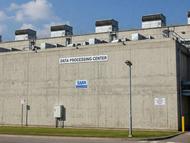Powering Data Centers & AI - ORIGINAL CONTENT
- By:
- Edward A. Reid Jr.
- Posted On:
- Jun 23, 2025 at 6:00 AM
- Category
- Energy Policy, Climate Change
The federal goals of Net Zero by 2050 and “all-electric everything” have been placed “on hold” at least temporarily. Therefore, the primary drivers of electric demand and consumption growth are now expected to be data centers and AI. Each of these loads are expected to demand 0.5 to 3 GW and to experience relatively constant consumption throughout the year.
The recent federal and state efforts to expand renewable electric generation and discourage continued operation fossil fueled generation have reduced utility capacity reserve margins and therefore the reliability and resilience of their grids. Many utilities do not have the reliable additional generating capacity necessary to power these large new customer loads.
Data center and AI developers have approached utilities about providing service, but several developers have also expressed a willingness to develop dedicated generation resources to power their facilities if utilities are unable or unwilling to provide service. Microsoft has contracted with Constellation Energy to power a data center with output from one of the nuclear reactors at Three Mile Island which would be restarted specifically to serve their data center. Other developers are developing plans to power facilities with multiple natural gas combined-cycle generators, possibly bottomed with absorption chillers to provide cooling. Still other developers are considering using small modular nuclear reactors (SMRs) to provide on-site power.
These new data centers and AI facilities will be located, at least initially, in areas where reliable utility power is available, or in areas with adequate natural gas supply and transmission capacity to fuel dedicated generation capacity. These facilities will require firm gas supply and transmission contracts to ensure that service is continued under extreme weather conditions. Facilities to be served by dedicated SMRs would probably have a longer planning horizon because of the newness of the technology, its limited availability and an expected longer approval process.
Some states with Renewable Portfolio Standards might object to the construction of new non-renewable generating capacity. Some states might object to the construction of dedicated non-utility generating capacity. Some utilities might object to the intrusion of non-utility generation in their franchise service territories. Such objections would likely cause the developers to seek alternative sites for their installations.
The large, relatively constant power consumption of these facilities might be the stimulus necessary to support development of new large scale nuclear power plants, which could be a major asset in stabilizing the operation of electric grids which include a high percentage of intermittent renewable generation. There is already one such facility in the planning stages which would require the output of three gigawatt-scale powerplants. Nuclear generation would be an ideal fit for these facilities since nuclear generators operate most economically at a constant capacity and these data centers and AI facilities represent almost constant loads year-round.
Nuclear generation also offers the advantage that it would be unaffected by the reimposition of CO2 emission controls such as the clean Power Plan which might occur under a different federal Administration.


